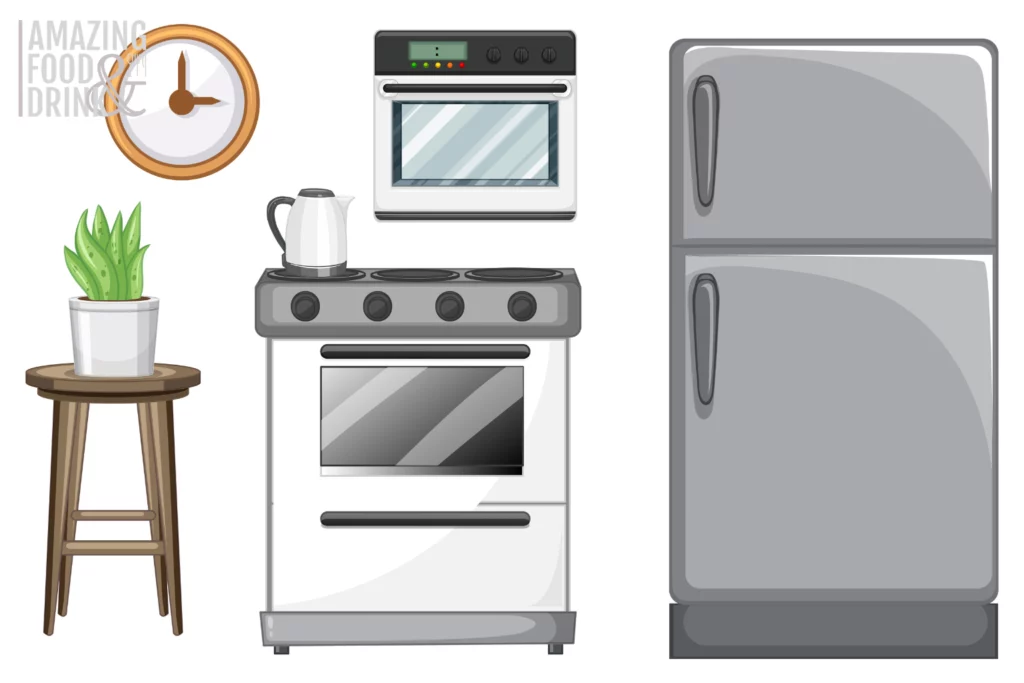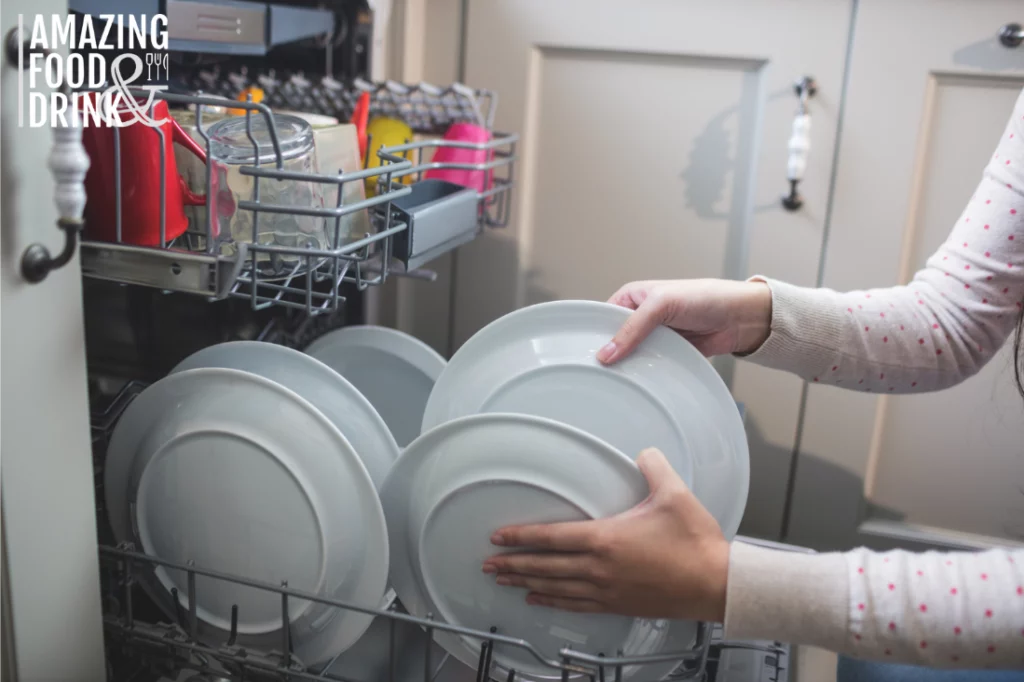Kitchen Appliances: Culinary Companions that Shape Our Lives
From the humble fridge to the innovative sous vide machine, kitchen appliances have become deeply integrated into our lives, transforming how we cook, eat, and interact with food. They are more than just tools for preparing meals; they are culinary companions shaping our kitchen experiences and beyond.
The history of kitchen appliances is a fascinating journey that mirrors the evolution of our society. Early inventions focused on simplifying basic tasks, such as grinding grains with hand-powered mills or churning butter with wooden churns. With the increase in industrialisation and technological advancements in the 19th and 20th centuries, we had an explosion of new appliances, each taking on a specific function and freeing us from laborious manual processes.
Today, the kitchen appliance landscape is vast and diverse, offering options for every budget and culinary ambition. The possibilities are endless, from essential appliances like fridges, ovens, and dishwashers to specialised gadgets like blenders, food processors, and instant pots. In this article, let’s dive deep into the history of kitchen appliances, explore their future trends, and discover their social and cultural significance.
The Early Days Of Kitchen Appliances
The journey of kitchen appliances dates back to ancient times when cooking primarily involved an open flame and basic utensils. The hearth was the kitchen’s focal point, and cooking was an uphill task that demanded significant time and effort. As societies progressed, so did the tools used in the kitchen.
The invention of hand-cranked gadgets in the 19th century marked a turning point. Manual egg beaters, hand-cranked coffee grinders, and other simple devices brought the kitchen a new level of efficiency. These innovations laid the groundwork for the mechanical marvels that would follow.
The Golden Age of Kitchen Appliances
The 20th century saw an explosion of technological advancements in kitchen appliances, transforming how households approached food preparation. The introduction of electric power paved the way for a wide array of electrically powered appliances that became emblematic of the modern kitchen.
Fridges, washing machines, and vacuum cleaners became staples in households, freeing up valuable time and reducing the manual labour associated with daily chores. The advent of the electric stove and oven revolutionised cooking, making temperature control more precise and cooking times more predictable.
The Rise of Specialised Appliances

As the 20th century progressed, kitchen appliances began to specialise, catering to consumers’ diverse tastes and preferences. Initially developed for industrial purposes, microwave ovens found their way into homes, revolutionising how we reheat and cook food. The food processor became a must-have for culinary enthusiasts, simplifying chopping, slicing, and dicing tasks.
The 21st century brought further innovations, with intelligent appliances entering the scene. Fridges with built-in touchscreens, ovens with Wi-Fi connectivity, and coffee makers with customisable brewing profiles became a testament to technology integration into the kitchen space.
Sustainability and Kitchen Appliances
As concerns about environmental sustainability grew, so did the demand for eco-friendly kitchen appliances. Energy-efficient fridges, induction hobs, and dishwashers designed to use minimal water became popular among environmentally conscious consumers. The industry responded by prioritising energy efficiency and developing appliances that reduce their carbon footprint.
Additionally, the movement towards sustainable and locally sourced ingredients has influenced the design of kitchen appliances. Composting units, reusable food storage solutions, and appliances that promote waste reduction have become integral parts of eco-friendly kitchens.
Smart Kitchens
The concept of smart kitchens, driven by the Internet of Things (IoT) and artificial intelligence, has gained momentum in recent years. Smart appliances have sensors and connectivity features that allow users to control and manage them remotely through smartphone apps. Fridges that create shopping lists, ovens that can be preheated with voice commands, and coffee makers programmed to brew coffee at specific times exemplify the convenience and efficiency of bright kitchens.
However, integrating technology also raises concerns about data privacy and the longevity of these connected devices. As the industry innovates, finding a balance between convenience and security becomes imperative.
Challenges and Future Trends
While kitchen appliances have undoubtedly improved our lives, they are not without challenges. The reliance on electronic components and complex mechanisms makes modern appliances susceptible to malfunctions and repairs. Furthermore, the fast pace of technological advancements raises questions about the longevity and compatibility of appliances.
The kitchen appliance industry is expected to focus on sustainability, energy efficiency, and user-friendly designs. Advances in materials, such as those in the development of eco-friendly packaging and non-toxic coatings, will likely influence the manufacturing of kitchen appliances. Additionally, integrating artificial intelligence and machine learning may lead to more intuitive and adaptive appliances catering to individual cooking styles and preferences.
The Impact on Cooking
The availability of these tools has undoubtedly revolutionised the way we cook. Gone are the days of spending hours over open fires or meticulously preparing meals from scratch. With the push of a button, we can roast vegetables, bake cakes, and even slow-cook stews, freeing up valuable time and energy.
Appliances have also democratised cooking, making it accessible to people of all skill levels. Even those who lack culinary confidence can create delicious and impressive meals with the help of user-friendly appliances and pre-programmed settings.
Furthermore, appliances have opened up exciting culinary frontiers. Innovations like sous vide machines, air fryers, and pressure cookers allow us to experiment with new cooking techniques and create previously impossible dishes in a home kitchen.
Beyond Efficiency
While efficiency and convenience are significant benefits, the impact of kitchen appliances extends far beyond simply saving time and effort. They play a crucial role in influencing our food choices and eating habits.
For example, the widespread availability of blenders and juicers has fuelled the popularity of smoothie bowls and juice cleanses. Similarly, the rise of single-serving appliances like microwaves and toaster ovens has contributed to individual portion sizes and convenience eating.
Appliances can also be a powerful tool for promoting healthy eating. Food processors make incorporating more fruits and vegetables into our diets easier, while slow cookers allow us to prepare nutrient-rich meals in advance.
The Social and Cultural Significance
The kitchen has long been a central gathering place in homes across cultures. Kitchen appliances are vital in facilitating these connections, creating opportunities for shared experiences through cooking, baking, and dining together.
From holiday feasts prepared with loved ones to casual weekend breakfasts, kitchen appliances facilitate the creation of memories and strengthen family bonds. They also promote cultural exchange, allowing people to explore and celebrate diverse culinary traditions worldwide.
Examples of Some Kitchen Appliances
Kitchen appliances come in a wide variety, serving different purposes to make cooking, cleaning, and food preparation more convenient. Here are examples of some common kitchen appliances:
Fridge

A fridge is a vital kitchen appliance that keeps perishable foods fresh by maintaining a low temperature. It consists of a freezer and a fridge and is often equipped with features like ice dispensers, water filters, and temperature controls.
Modern fridges may also incorporate innovative technology, allowing users to monitor and adjust settings remotely through mobile applications. The fridge is the basis of food storage in a kitchen, preserving the quality and safety of a wide range of items, from fruits and vegetables to dairy and meats.
Oven
Ovens are versatile kitchen appliances used for baking, roasting, and broiling food by applying dry heat. They come in various types, including conventional, convection, and microwave ovens.
Conventional ovens use heating elements, while convection ovens circulate hot air for more even cooking. Microwave ovens utilise microwave radiation to heat and cook food quickly. Ovens are indispensable for preparing various dishes, from baked goods to casseroles, making them a fundamental kitchen component.
Dishwasher

The dishwasher is a time-saving kitchen appliance designed to automate the cleaning and sanitising of dishes, utensils, and cookware. This appliance utilises a combination of water pressure, detergent, and heat to remove food residues and bacteria, providing a convenient alternative to manual dishwashing.
Dishwashers come with various settings, including eco-friendly and quick wash options. They also contribute to water conservation by using less water than traditional handwashing methods. With the ability to handle large loads, dishwashers have become integral to modern kitchens, streamlining the post-meal cleanup process.
Blender

Blenders are versatile kitchen appliances that excel in mixing and blending ingredients to create a variety of culinary delights. Supplied with a powerful motor and sharp blades, blenders can whip up smoothies, soups, and sauces. They can even crush ice for refreshing beverages.
The adjustable speed settings and various blending modes make blenders suitable for multiple tasks, from pureeing fruits to creating creamy dips. Their compact and user-friendly design has made them a famous option for those seeking convenience and efficiency in the kitchen.
Coffee Maker

Coffee makers are dedicated appliances designed to brew the perfect cup of coffee, catering to the diverse tastes of coffee enthusiasts. Automating the brewing process, these appliances are available in various types, including drip coffee makers, espresso machines, and single-serve brewers.
Drip coffee makers allow for the brewing of larger quantities, while espresso machines provide a more concentrated and customisable coffee experience. Single-serve brewers, such as pod-based systems, offer convenience and various flavour options. Coffee makers have become integral to many kitchens, providing a morning ritual and a social centrepiece for coffee lovers.
Conclusion
Kitchen appliances have undoubtedly transformed how we cook, eat, and connect with food. They offer countless benefits, from simplifying tasks to fostering shared experiences. As we move forward, embracing the potential of these technologies while remaining aware of the environmental and ethical implications is crucial. By striking this balance, kitchen appliances can continue to enhance our lives and empower us to create delicious and meaningful culinary experiences.
The evolution of kitchen appliances has been fascinating, from the simplicity of hand-cranked gadgets to the complexity of intelligent, connected devices. These appliances have not only transformed how we cook and eat but have also become central to the design and functionality of modern kitchens. As we navigate the challenges and embrace future trends, one thing remains sure: kitchen appliances will continue to shape the culinary landscape, making our lives more convenient, efficient, and enjoyable.

